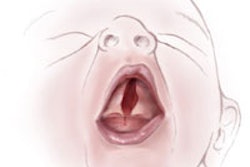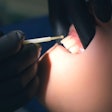Researchers have identified a new gene related to the Van der Woude syndrome (VWS), the most common syndrome with cleft lip and palate, according to a new study in the American Journal of Human Genetics (December, 19, 2013).
The findings could lead to improved genetic diagnosis of people and families with orofacial clefts, according to the researchers.
There are more than 350 syndromes with clefts, of which Van der Woude syndrome (VWS) is the most common. About 70% of the people with VWS have a mutation in a gene called interferon regulatory factor 6 (IRF6).
Now an international team led by researchers from the Karolinska Institute in Stockholm has found a second gene related to VWS.
The researchers conducted a genetic linkage study of a large family from Finland. The family had been diagnosed with VWS, although no mutations were found. By comparing the DNA of affected individuals with DNA from healthy family members, the researchers identified another gene, called Grainy-head like 3 (GRHL3), which was mutated only in the affected family members. The same gene was found to be altered in seven additional families with VWS in which no IRF6 mutations had been found previously.
One or more polymorphisms in GRHL3 might be associated with increased risk of clefts in nonsyndromic cases, according to the researchers.
To further investigate the role of GRHL3 in oral abnormalities, six laboratories collaborated and studied human mutations of the gene in zebrafish and mouse models. They found that mouse embryos lacking GRHL3 cannot form a proper palate and are born with a cleft. GRHL3 encodes a transcription factor that is itself regulated by IRF6.
Both genes are required for a proper formation of the palate, probably functioning in separate but convergent molecular pathways, the researchers concluded. The study highlights the importance of studying even rare patients to increase understanding of disease mechanisms.



















